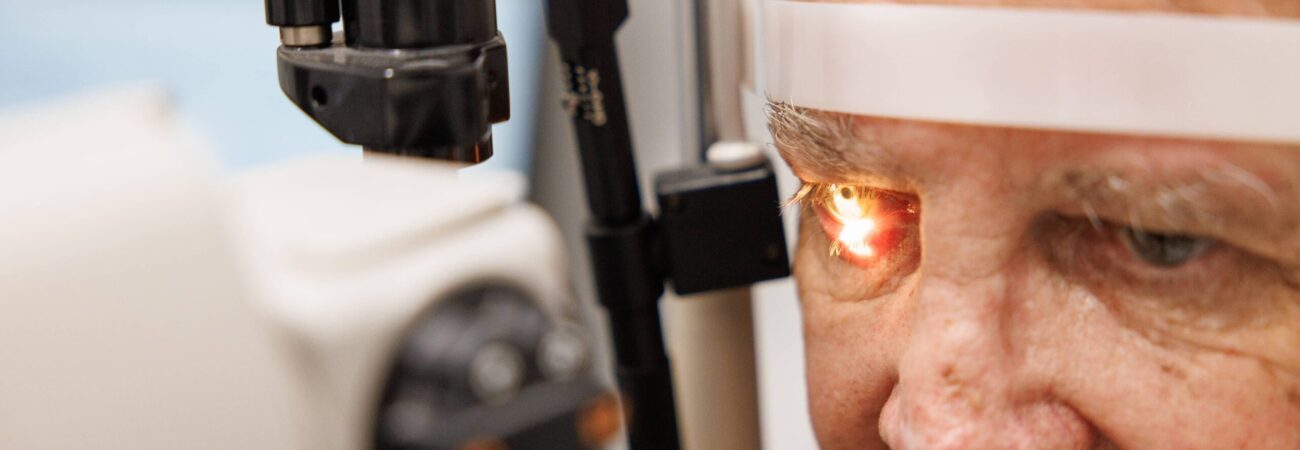Did you know that 2.5% of Australians are diagnosed with glaucoma? This eye condition, characterised by damage to the optic nerve, can lead to vision loss or even blindness if undetected. Early detection is crucial, which is why you must have regular eye exams.
To address concerns about early detection, you might wonder: Can an optometrist diagnose glaucoma? The answer is yes. Optometrists are licensed to conduct initial glaucoma screenings. However, for severe cases requiring complex treatment, an ophthalmologist’s expertise is necessary.
As primary eye care providers, our optometrists at EyeSelect utilise advanced diagnostic tools and techniques to assess your eye health thoroughly. If glaucoma is suspected, we can provide you treatment options and develop a personalised care plan to manage the condition effectively.
Before you learn how we diagnose and treat glaucoma, let’s understand first what glaucoma is.
What Is Glaucoma?
Often called “the silent thief of sight”, glaucoma is an eye disease that damages your optic nerve and retinal tissues. As the nerve gradually deteriorates, blind spots (scotomas) develop in your vision, making it difficult to see things.
Awareness is the key to detecting glaucoma early. However, if you already have it, managing and treating it is crucial. Here are the primary types of glaucoma we assess:
Types of Glaucoma
Open-angle Glaucoma (Chronic Glaucoma)
This is the most common type of glaucoma, developing gradually without noticeable symptoms. Even if slight vision loss occurs, it may be overlooked. To protect your eyesight, we recommend visiting an optometrist every two years for a comprehensive eye exam.
Closed-angle Glaucoma (Acute Glaucoma)
Unlike chronic glaucoma, this type is an emergency situation. Its symptoms appear suddenly and severely. You may start to experience eye pain, headache, nausea and blurred vision due to the increase of your eye pressure.
Normal Tension/Low Pressure Glaucoma
This type occurs when blood flow to the optic nerve is insufficient, even if eye pressure is normal. Symptoms overlap with other conditions like migraines, sleep apnea and low blood pressure.
Secondary Glaucoma
Secondary glaucoma is often caused by underlying eye conditions or systematic factors. It develops after eye injuries, tumours, inflammation, or as a side effect of certain medications like steroids.
Types of secondary glaucoma:
- Pigmentary Glaucoma: Caused by changes in your pigment cells, leading to discoloration of the iris.
- Congenital Glaucoma: Diagnosed at birth. Children with this condition are sensitive to light. They have cloudy eyes and excessive tearing.
- Exfoliation Glaucoma: Occurs when flaky material peels off the outer layer of your lens, causing you to feel something is stuck in your eyes.
- Uveitic Glaucoma: Result of inflammation of your iris and other layers of your eyes.
- Traumatic Glaucoma: Occurs immediately after a severe eye injury. It can also be caused by eye bruises or “blunt trauma”, causing your blood flow to alter.
Who Is at Risk of Glaucoma?
You are at a higher risk of developing glaucoma if:
- Your parents or close relatives have it.
- You have high eye pressure.
- You are over 50.
- You are short-sighted or long-sighted.
- You use or have used cortisone (steroid) medications for long periods.
- You have diabetes or high/low blood pressure.
- You have had an eye operation or eye injury.
Role of Optometrists
Optometrists are dedicated to preserving your vision. We conduct comprehensive eye exams to detect early signs of eye diseases, including glaucoma, as well as vision problems like astigmatism, long-sightedness and short-sightedness, injuries and abnormalities.
How Does an Optometrist Diagnose Glaucoma?
We follow a comprehensive process when diagnosing glaucoma. The steps are outlined below:
1. History Taking
Understanding your medical history is crucial for glaucoma detection. We assess your risk factors, eye symptoms, family history and past health to identify potential signs of this eye condition.
2. Diagnostic Tests
Detecting glaucoma requires a thorough eye examination. We use specialised equipment to measure various parts of your eye.
Below are the list of glaucoma diagnostic tests we conduct:
| Glaucoma Diagnostic Tests | Description |
| Dilated Eye Exam | This test allows us to see the back of your eye, including your retina and optic nerve. |
| Eye Pressure Test (Tonometry) | We measure the pressure inside your eye to check for glaucoma risk. High eye pressure is a risk factor for glaucoma. |
| Visual Field Test (Perimetry) | This test maps your vision to find any blind spots that might indicate glaucoma. |
| OCTA (Optical Coherence Tomography Angiography) | This detailed eye scan shows 3D images of your blood flow and other signs of glaucoma. |
| Drainage Angle Test (Gonioscopy) | We examine the eye’s drainage system to check for blockages, which is a clear sign of glaucoma. |
| Cornea Thickness Test (Pachymetry) | This test measures your cornea’s thickness, which can affect glaucoma risk. A thinner cornea can lead to poor night vision, increased light sensitivity, and vision loss, which is often associated with a higher risk of glaucoma, |
3. Recommendations & Referrals
After the comprehensive tests, optometrists may refer you to an ophthalmologist for further evaluation. They will confirm the diagnosis and check the disease’s progression. If we suspect acute glaucoma, we’ll recommend immediate treatment.
By understanding how we diagnose glaucoma, you can take proactive steps to protect your vision and start visiting a nearby optometrist.
Care for Your Eyes with EyeSelect
Understanding the role of optometrists as your eye care provider is crucial for maintaining your overall eye health. Our expertise in diagnosing glaucoma can help you prevent future vision loss.
Here at EyeSelect, we prioritise your eye health. Our comprehensive eye exams and optometry services ensure you a reliable glaucoma diagnosis.
If you need advice on glaucoma, feel free to contact us. Book an appointment today to get your eyes checked
To learn more about eye care health tips, read our other blogs now.





